Palau de la Música Catalana: A guide to the iconic concert hall in Barcelona
Step into the enchanting world of Palau de la Música Catalana - a magnificent concert hall in Barcelona, Spain. Our guide provides an immersive experience and everything you need to know before visiting, from history and architecture to upcoming events and ticket information.
Barcelona is known for its architecture, particularly for the modernist or Art Nouveau style that flourished in the city in the late 19th and early 20th centuries. The most famous architect associated with this style is Antoni Gaudí, whose works such as the Sagrada Familia, Casa Mila, Casa Batlló, and Park Güell are popular tourist attractions in the city. Other notable architects who left their mark on Barcelona include Lluís Domènech i Montaner, who designed the Palau de la Música Catalana and the Hospital de Sant Pau, and Josep Puig i Cadafalch, who created Casa Amatller and Casa de les Punxes. The city also has many examples of Gothic, Renaissance, and Baroque architecture, as well as contemporary buildings by world-renowned architects.
During our trip to Barcelona with Jet2, we managed to visit a number of notable buildings in the city and one of them was the Palau de la Música Catalana, an architectural gem.
The Palau de la Música Catalana is a masterpiece of Catalan modernist architecture. Designed by Lluís Domènech i Montaner, it showcases intricate details, vibrant stained glass windows, colourful mosaics and is a testament to the artistic and cultural heritage of Catalonia.
The Palau is renowned for its exceptional acoustics. Whether you attend a classical music concert, chamber music performance, or a choral recital, you will be treated to an immersive and captivating auditory experience.
What to See at the Palau de la Música Catalana
The Concert Auditorium
The Concert Auditorium, also known as the Sala de Concerts, is the main performance space within the Palau de la Música Catalana. It is famous for its stunning architecture and exquisite acoustics. The hall is characterised by its ornate and colourful design, featuring intricate details, vibrant stained glass windows, sculptures, and beautiful mosaics.
The stage of the Concert Auditorium is the focal point of the hall, adorned with sculptures and decorative elements. The seating arrangement follows a horseshoe shape, surrounding the stage, ensuring that the audience has an intimate and immersive experience. The hall has a seating capacity of around 2,000 people, making it a medium-sized venue suitable for various types of concerts and performances.
Another centerpiece of the Concert Auditorium is its spectacular stained glass skylight, known as the 'flower of glass'. Designed by the artist Antoni Rigalt (along with Lluís Domènech i Montaner), it allows natural light to flood the hall, creating a breathtaking and unique ambiance during daytime performances. The interplay of light and colour within the space is considered one of the highlights of the Palau de la Música Catalana.
Over the years, the Concert Auditorium has hosted a wide range of musical performances, including classical music concerts, chamber music, opera, and choral performances. It has been a venue for renowned orchestras, such as the Orquestra Simfònica de Barcelona i Nacional de Catalunya, as well as internationally acclaimed musicians and conductors.
Lluís Millet Hall
The Lluís Millet Hall, named in honour of Lluís Millet, is a smaller, multi-functional space that serves as a versatile venue for various events, including chamber music performances, conferences, lectures, rehearsals, and smaller-scale concerts.
The Lluís Millet Hall features a more intimate setting compared to the larger Concert Auditorium of the Palau and is characterised by its elegant design, with decorative elements inspired by Catalan modernism. The hall showcases beautiful stained glass windows and intricate details that contribute to the overall artistic atmosphere of the Palau de la Música Catalana.
The Balcony with the Columns
The balcony of Palau de la Música Catalana is beautiful. A number of columns decorated with polychrome floral mosaics add to the beauty of the space.
This looked like a favourite spot for photographs for many of the visitors.
The Foyer
The foyer at the Palau de la Música Catalana is a grand and spacious area located in the entrance hall of the building. It is characterised by stunning decorative elements including wide arches built with bricks and green and floral-pattern glazed ceramics.
In addition to being used as a restaurant-cafeteria (as was the case when we visited), the foyer also acts as a meeting point for concertgoers before and after performances, and often hosts exhibitions, art displays, and cultural events.
The Façade
The façade of the Palau de la Música Catalana is a remarkable example of Catalan modernist architecture and is considered one of the most iconic and visually stunning elements of the building. It reflects the artistic vision of the architect Lluís Domènech i Montaner, who designed the Palau as a celebration of Catalan culture and music.
The façade is characterised by its ornate and intricate details, showcasing a combination of architectural elements, sculpture, and decorative arts. It features a harmonious blend of different materials, including exposed brickwork, ceramics, ironwork, and stained glass, which contribute to the overall richness and visual appeal of the design.
The centerpiece of the façade is a large arch with a sculptural group at its summit representing a choir of angels and musicians, symbolising the importance of music and the arts. The arch is flanked by two towers that rise above the façade, each adorned with colourful mosaics and decorative motifs.
Another distinctive feature of the façade is its extensive use of stained glass windows, which allow natural light to filter into the interior spaces.
Overall, I would say that the attention to detail, the use of vibrant colors, and the incorporation of symbolic elements make the façade an extraordinary example of the architectural beauty that can be found throughout the Palau.
Pictured below is a former ticket box of the concert hall. How beautiful it is!
Whether you are a music lover, an architecture enthusiast, or someone interested in immersing yourself in the cultural heritage of Catalonia, a visit to the Palau de la Música Catalana is a must if you are travelling to Barcelona. It offers a unique and unforgettable experience that celebrates the power of music, art and Catalan identity.
Getting to the Palau de la Música Catalana
There are a number of ways to get to the Palau de la Música Catalana.
By using public transportation: The Palau de la Música Catalana is located in the city center, making it easily accessible by public transportation.
- Metro: Take the metro to the Urquinaona station (Lines L1 and L4) or the Jaume I station (Line L4). Both stations are within walking distance of the Palau de la Música Catalana.
- Bus: Various bus lines serve the area around the Palau de la Música Catalana. Check the local bus routes and schedules to find the most convenient option for you.
By walking: If you are already in the city center, you can consider walking to the Palau de la Música Catalana. It is located in the El Born neighborhood, close to other popular attractions such as the Gothic Quarter and the Barcelona Cathedral.
By taxi or by ride-sharing: Taxis and ride-sharing services like Uber or Cabify are widely available in Barcelona. Simply provide the address of the Palau de la Música Catalana to the driver, and they will take you directly to the destination.
Remember to check the schedule and purchase tickets in advance if you plan to attend a specific event at the concert hall.
Guided tours at Palau de la Música Catalana
The venue also offers guided tours and these are great if you want an in-depth and informative visit. Guided tours are of many different kinds with the classic guided tour lasting around 50 minutes (20 Euro per person) and a professional guide accompanies you on the tour sharing detailed information about the architecture, the stained glass, the sculptural sets and more. Subject to availability, you might also get the chance to go up on the stage.
Then there is the 'Audio-guided tour' where you can download the audio guide on your mobile. The 'Self-guided tour with brochure' allows for a self-guided visit with the support of a brochure and the help of the information staff.
Also popular with visitors is the 'Guided tour with professional photo shoot' in which you can enjoy a guided tour along with a photo session in the most beautiful spaces of the Palau; you also get a selection of 8/12 digital photos to preserve the memories.
Do check with the ticket office when you visit as they may have other types of guided tours as well.
For more information on current ticket prices, the opening times etc. visit www.palaumusica.cat


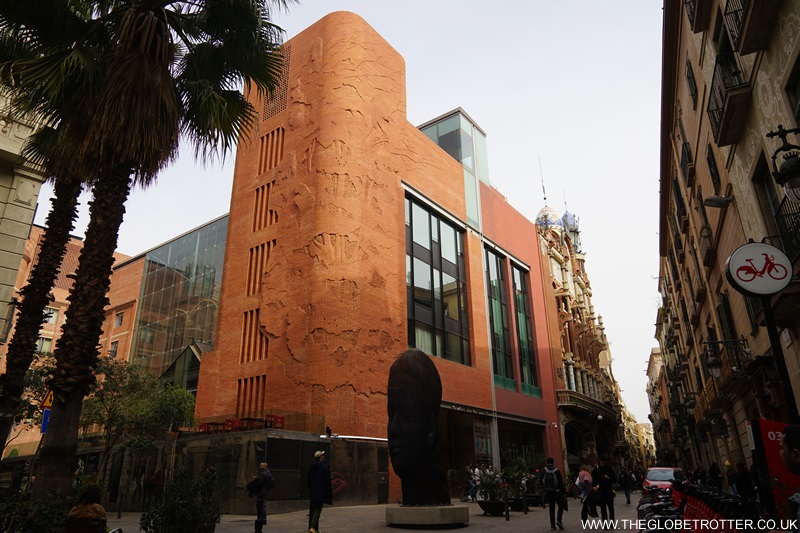

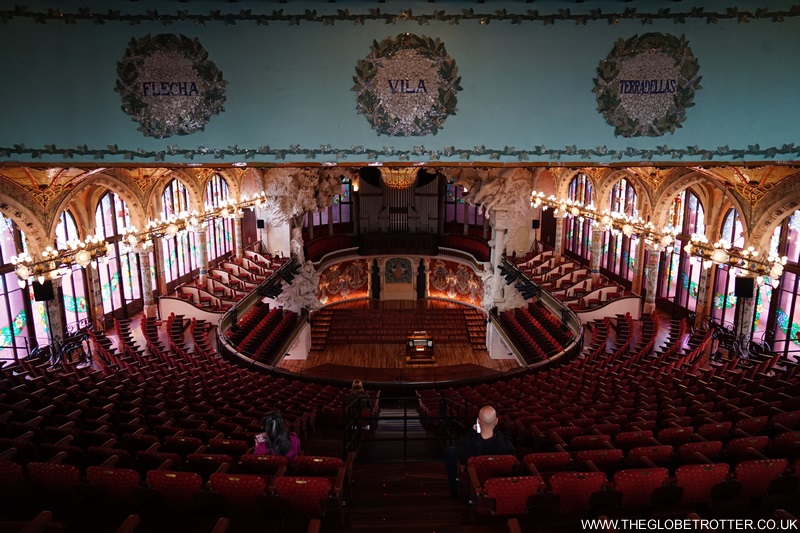



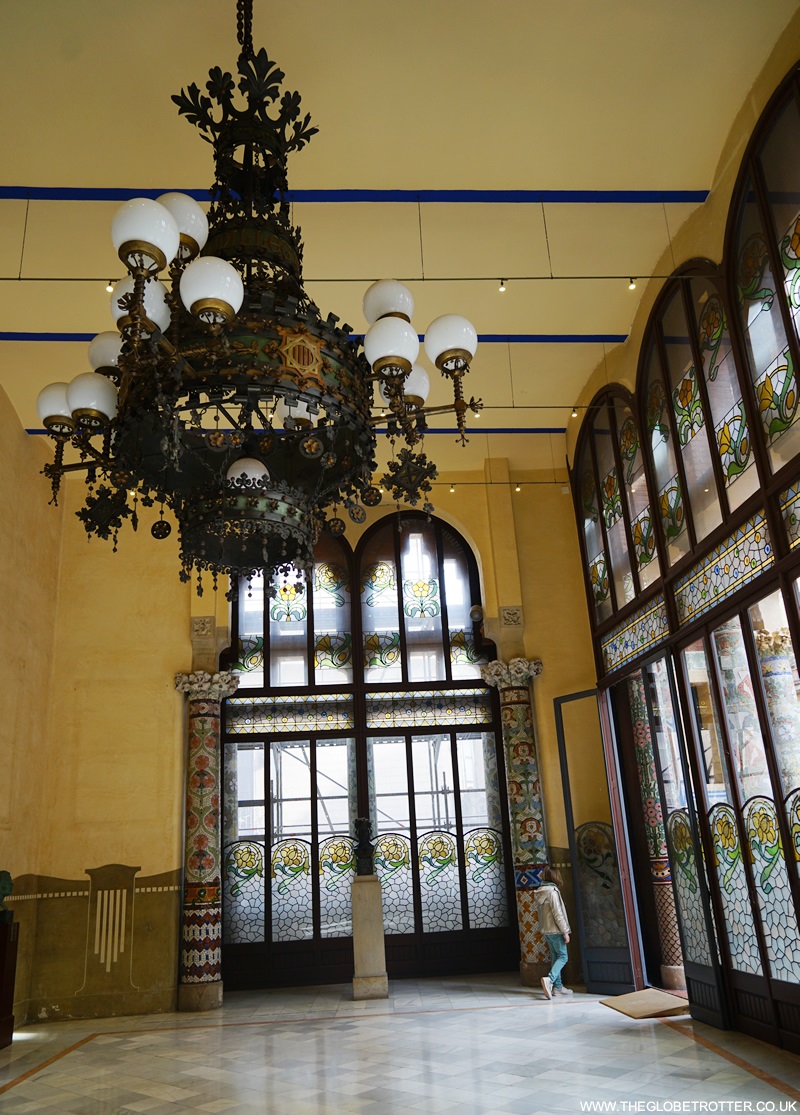
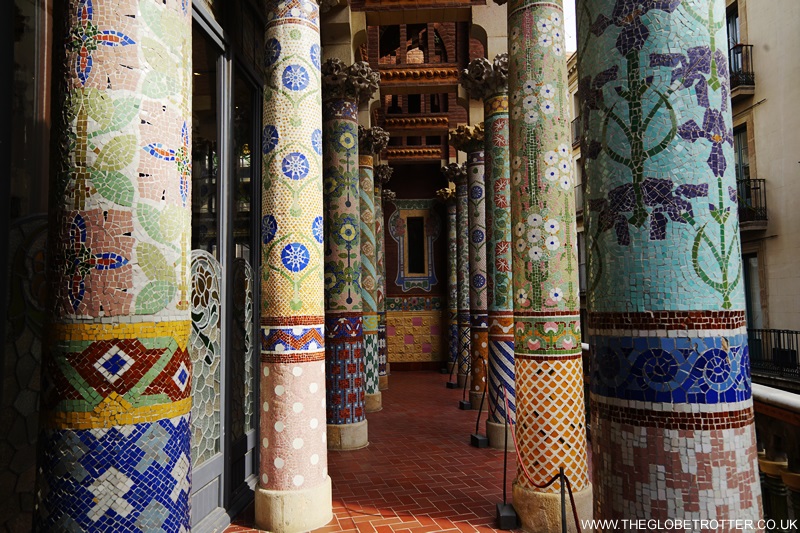
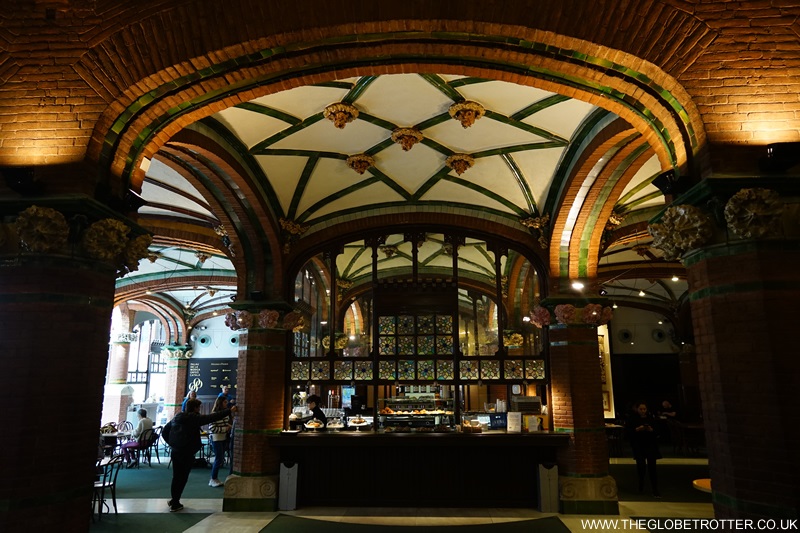



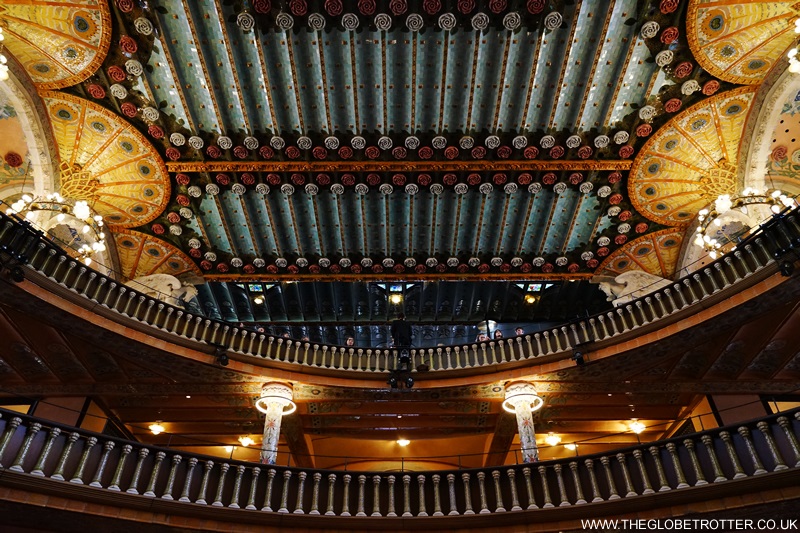

Post a Comment